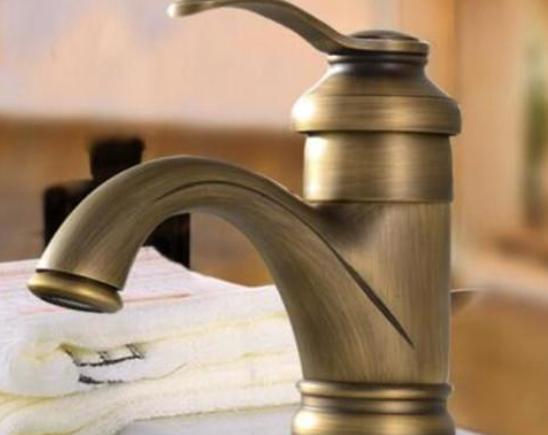The demand for water in our life is high. So, it is important to choose a suitable faucet when decorating. Next, I'd like to introduce to you what materials the faucet has and their respective advantages and disadvantages.
Brass is the most common material for making faucets. It is processed by international standard H59/H62 copper, and the casting adopts steel mold for gravity casting. Its wall thickness is uniform, generally 2.5 to 3.0 mm. Brass faucets are characterized by non-rust, durability and oxidation resistance. It has bactericidal effect on water. The disadvantage of brass is that it contains lead. Lead is a metal harmful to health. International standards require that the lead content in copper should not exceed 2.5%.

Zinc alloy is the lower-end material. The density of zinc alloy is smaller than that of copper, and the faucet feels heavier than that of copper. Seen from the inner wall, the surface of zinc alloy is easily oxidized. White oxidized powder will appear on the surface of zinc. The strength is much worse than that of copper. Its service life is not long and its lead content is high. Faucets made of zinc alloy will oxidize in one to two years. At present, zinc alloy is mainly used to make faucet handles. The handle is made of zinc alloy die-casting and then chrome plated. At present, most faucet handles on the market are made of zinc alloy. However, zinc alloy faucets have disadvantages. Because the toughness of the material is poor, cracks are easy to occur after long-term use.
Another material is engineering plastics. ABS plastic faucet has the advantage of corrosion resistance. And it is resistant to aging and rust. ABS plastic faucet is lead-free, non-toxic and tasteless. And it is resistant to high pressure and light in weight. It has the characteristics of easy construction and low price. It is a new type of green and environment-friendly product. ABS plastic faucets prevent water from rust and pollution. The faucet made of ABS plastic is environment-friendly, non-toxic and pollution-free, and its shape is exquisite. The installation is simple and convenient. And it meets the national standards for drinking and civil drinking water. This kind of green and environment-friendly product will be a trend in the faucet industry and should be vigorously promoted.
Faucets made of different materials are suitable for making faucets of different styles. You can choose it according to your decoration style.
These are some points on how to distinguish faucet materials. First of all, look at the material on the inner wall of the faucet. Copper is the natural color of brass, and the inner wall of zinc alloy has oxide white powder. Secondly, feel its weight. Under the same product, copper is heavier than zinc alloy, while plastic products are the lightest. The next step is to look at the surface treatment of the faucet. Copper, zinc alloy and plastic faucets are all chrome-plated. Most stainless steel is treated by primary color wire drawing. The electroplating effect of copper is the best. It can be further judged by beating and listening to the sound. Brass sounds dull when knocked, while if the sound is crisp, it is usually made of stainless steel or alloy.
The above is the introduction of the faucet material, hoping to be helpful to you.

Leave a Reply